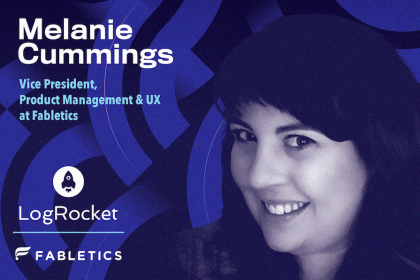Product management is a highly collaborative profession. The best products come to market, achieve product-market fit, and scale through not one person, but many. This process can be highly enjoyable and fulfilling when problems, ideas, and solutions take shape through group brainstorming.

Sometimes, though, this process can feel never-ending. Every product manager has found themselves in a back-and-forth debate about a customer problem, a feature’s value, or a particular risk — spinning in circles but never quite getting anywhere.
Breaking through these debate cycles (or minimizing their occurrence) may require a new way of doing things; a new way of approaching problem and solution discovery.
In this article, we’ll discuss a proven technique that may aid product managers in such situations: the six thinking hats technique.
Six thinking hats is a parallel thinking technique developed by psychologist and physician Edward de Bono, introduced in his book of the same name. The purpose of this technique is to produce better thinking and decision-making through a facilitated process of looking at problems from every angle.
You can use six thinking hats in many situations, from individual thinking to group brainstorming. In a group setting, the technique becomes a form of parallel thinking (also coined by de Bono), a process of splitting focus in specific directions toward a common objective. This is in contrast to adversarial thinking, which represents the “spinning in circles” debate of arguing a single idea, which can delay progress or cause a group to not consider every angle to the problem.
Six thinking hats achieves parallel thinking in a group setting by having the entire group wear one hat at a time:
The hats don’t have to be used in a specific order and don’t have to be used only once. Hats can be revisited for further thinking if the group feels it necessary based on perspectives that surfaced throughout the session.
If you aren’t sure where to start, the structure below provides a logical thinking path:
| 1 | Blue Hat | Set alignment around the problem |
| 2 | White Hat | Facts and data |
| 3 | Green Hat | Idea generation/solutioning |
| 4 | Red Hat | Feelings and intuition (emotional) |
| 5 | Yellow Hat | What could go well (logical) |
| 6 | Black Hat | What could go wrong (logical) |
| 7 | Blue Hat | Recap and next steps |
The core purpose of product management is to understand problems and identify the best solutions to those problems, which makes six thinking hats a viable framework for product managers to apply.
The technique can be used to strengthen understanding of a problem area, generate a diverse list of solutions, and evaluate those solutions from multiple angles. It can be particularly beneficial for prioritizing and de-risking solutions.
An example of how product managers can use six thinking hats is in brainstorming features to build that solve a specific customer problem:
This is just one example of how product managers can use six thinking hats. The technique can be effective in other areas, including quarterly planning and scoping technical requirements with engineering.
Three of the biggest benefits to using this technique are:
In adversarial thinking, individuals actively poke holes in others’ recommendations by looking at them through opposing lenses. This normalizes judgment and swirling debate, which can create conflict and inhibit progress.
In the parallel thinking enabled by six thinking hats, the chances of this are smaller, since everyone is thinking through the same lens. For example, when everyone is wearing the Yellow Hat, there is no one to counter every positive thought with a negative one. That’s reserved for the Black Hat.
This approach helps reduce conflict, keep ideas flowing, and keep the momentum going forward.
The individual wearing the Blue Hat can bring forth more diverse perspectives by actively soliciting thoughts from everyone in the group.
While this should be a goal of facilitators in any brainstorming framework, six thinking hats makes it easier and more effective. It can be challenging to get ideas from quieter individuals when the loudest ones in a group are constantly jumping between pros, cons, risks, new ideas, and new data points.
With six thinking hats, you can specifically ask individuals to share their thoughts about whatever the focus is at that time. This enables diverse perspectives by ensuring everyone is heard, and can also help ideas evolve with a “yes and” mentality while everyone is on the same page.
In adversarial thinking or ideation frameworks that are more open-ended, there can be a tendency to focus on a few specific angles for the entirety of the session. For example, everyone may be so excited about the ideas and potential benefits that they neglect to consider risk management, creating problems down the road.
Six thinking hats is structured to ensure that no angle is missed, ultimately resulting in more thorough ideas and plans, while de-risking potential unknowns in the future.
Six thinking hats also has disadvantages and pitfalls to be aware of when considering the technique:
The person in the Blue Hat needs to be assigned carefully. They should be someone who can provide clear instructions and background for the session, facilitate discussion and keep the momentum moving, participate in conflict resolution, and summarize the discussion and next steps.
While product managers may want to put themselves in this role, they should consider that they may not be effective participants for the other thinking hats. Even if they try to pull double duty, they may be so focused on generating ideas for the Green Hat that they neglect to manage the process or time.
For the best results, product managers should recruit a trusted colleague to act as the Blue Hat, so they can fully participate in the other thinking hats themselves.
Time management is a crucial element of six thinking hats and again falls to the person donning the Blue Hat. Some tips for managing time in these sessions are:
Not everyone has a knack for thinking of ideas or expressing their opinions on the spot. Some people need more time to think. This can be particularly challenging when they have to think a certain way at a certain time.
One way to mitigate this is to have a mix of quiet brainstorming and group discussion, where individuals write their thoughts on paper before sharing them with the group. This allows everyone to collect their thoughts without having to digest others’ thoughts simultaneously.
The best way to bring six thinking hats into your organization is to become a champion of it, and gradually introduce it to the work you’re leading.
You could first try it as a new framework for a brainstorming session in your product area. If you and others see the benefits of it, you can bring it to other parts of the organization and larger discussions, such as quarterly roadmap planning.
Remember that while the results and effectiveness promised by six thinking hats are large, in the end, it’s just another framework. The costs and risks of trying it are low, so if you’re interested, give it a shot and see what happens.
Worst case, the session isn’t as magical as expected, but you still come away with some good ideas and considerations.
Best case, it’s the perfect ideation framework for your organization and you become a hero for future planning cycles.
The six thinking hats technique is not unique to product management. In fact, you can find it in many different settings, including groups and individuals. If you want to bring it into your work, team, or life in general, I hope this article provides you with good background information and best practices to do so.
Featured image source: IconScout
LogRocket identifies friction points in the user experience so you can make informed decisions about product and design changes that must happen to hit your goals.
With LogRocket, you can understand the scope of the issues affecting your product and prioritize the changes that need to be made. LogRocket simplifies workflows by allowing Engineering, Product, UX, and Design teams to work from the same data as you, eliminating any confusion about what needs to be done.
Get your teams on the same page — try LogRocket today.

The continuous improvement process (CIP) provides a structured approach to delivering incremental product enhancements.

As a PM, you’re responsible for functional requirements and it’s vital that you don’t confuse them with other requirements.

Melani Cummings, VP of Product and UX at Fabletics, talks about the nuances of omnichannel strategy in a membership-based company.

Monitoring customer experience KPIs helps companies understand customer satisfaction, loyalty, and the overall experience.